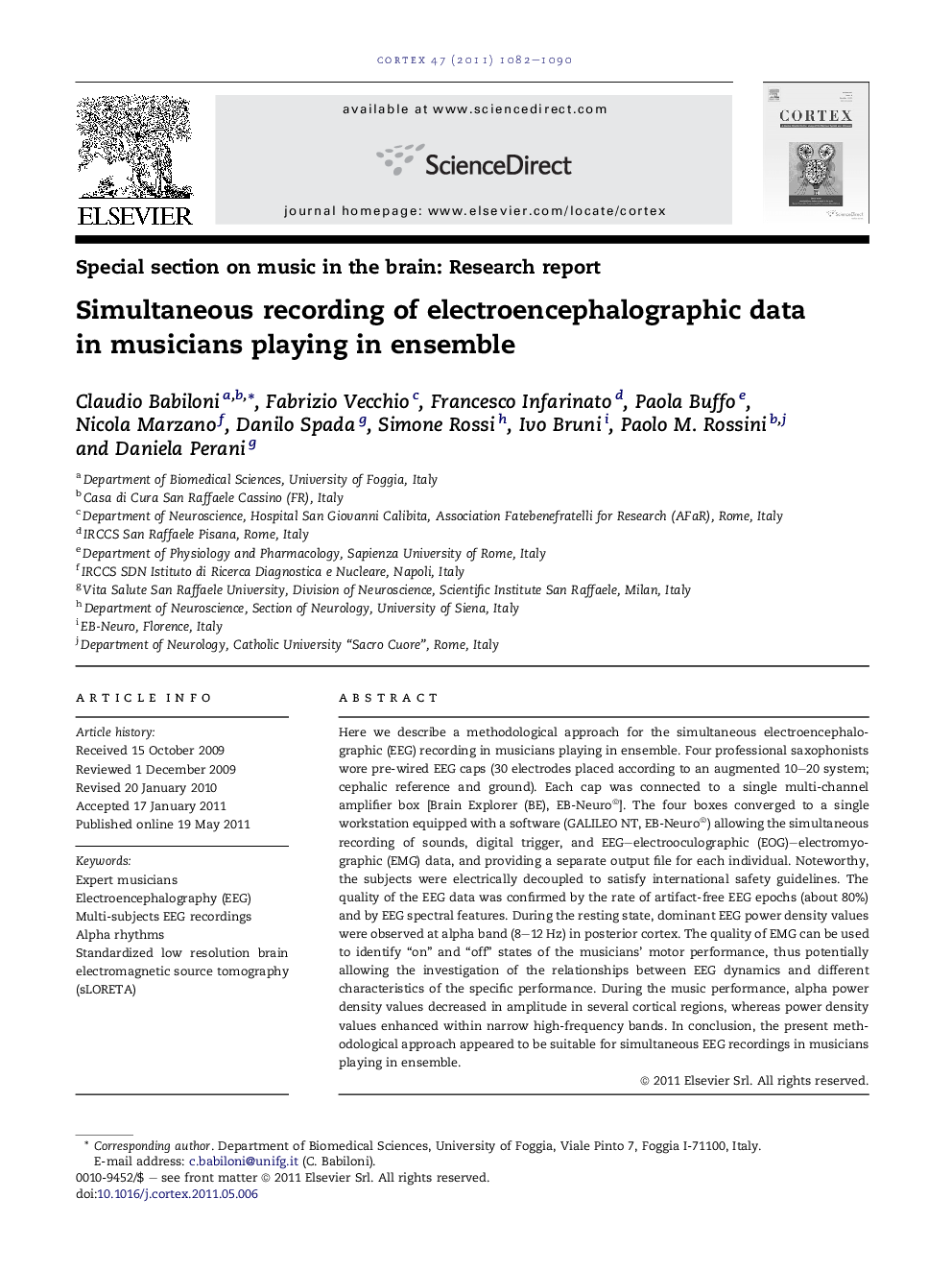| Article ID | Journal | Published Year | Pages | File Type |
|---|---|---|---|---|
| 942366 | Cortex | 2011 | 9 Pages |
Here we describe a methodological approach for the simultaneous electroencephalographic (EEG) recording in musicians playing in ensemble. Four professional saxophonists wore pre-wired EEG caps (30 electrodes placed according to an augmented 10–20 system; cephalic reference and ground). Each cap was connected to a single multi-channel amplifier box [Brain Explorer (BE), EB-Neuro©]. The four boxes converged to a single workstation equipped with a software (GALILEO NT, EB-Neuro©) allowing the simultaneous recording of sounds, digital trigger, and EEG–electrooculographic (EOG)–electromyographic (EMG) data, and providing a separate output file for each individual. Noteworthy, the subjects were electrically decoupled to satisfy international safety guidelines. The quality of the EEG data was confirmed by the rate of artifact-free EEG epochs (about 80%) and by EEG spectral features. During the resting state, dominant EEG power density values were observed at alpha band (8–12 Hz) in posterior cortex. The quality of EMG can be used to identify “on” and “off” states of the musicians’ motor performance, thus potentially allowing the investigation of the relationships between EEG dynamics and different characteristics of the specific performance. During the music performance, alpha power density values decreased in amplitude in several cortical regions, whereas power density values enhanced within narrow high-frequency bands. In conclusion, the present methodological approach appeared to be suitable for simultaneous EEG recordings in musicians playing in ensemble.
